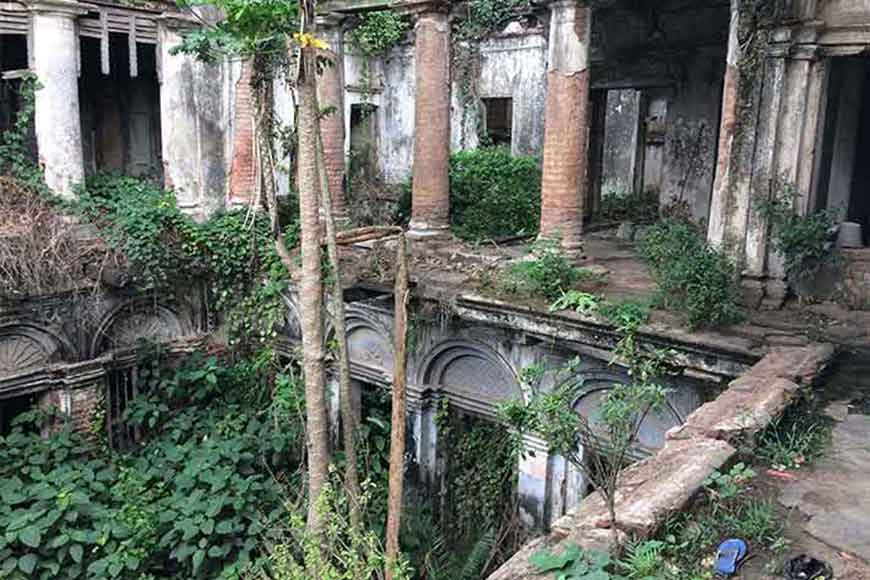The grand dilapidated Nimtita Palace where Satyajit Ray shot Jalshaghar
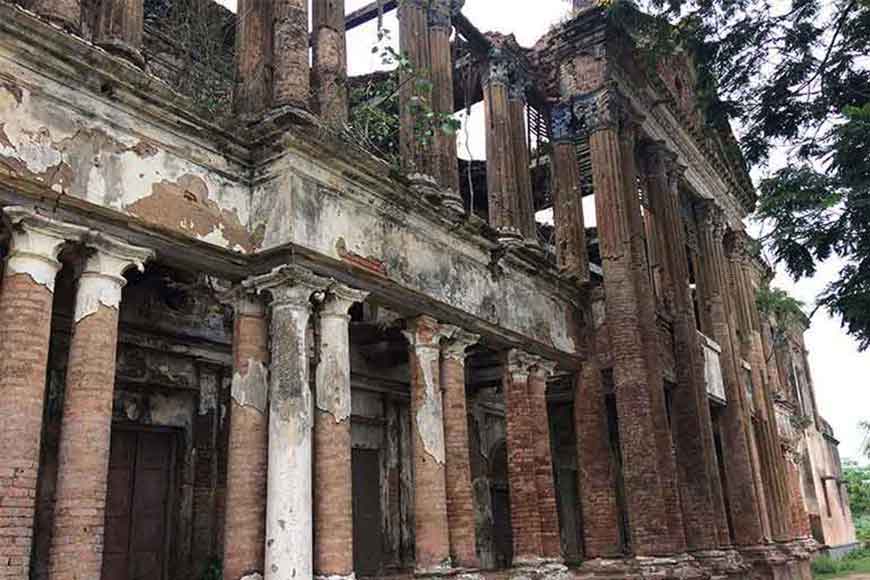
A dilapidated structure stands as testimony of a rich and glorious past of Bengal with the ruins of a grand terrace, a staircase full of weeds, rickety bricks jutting out on the banks of the mighty Ganges. This is the mansion where Chhabi Biswas in Satyajit Ray’s Jalshaghar lost all – his wealth, his family, but probably not his pride. Despite negligence and decay, Nimtita Raajbari still stands as a mute spectator of its lost glory. Even today, the breathtaking architectural grandeur of the structure instills awe as time stands still infront of this majestic palace.
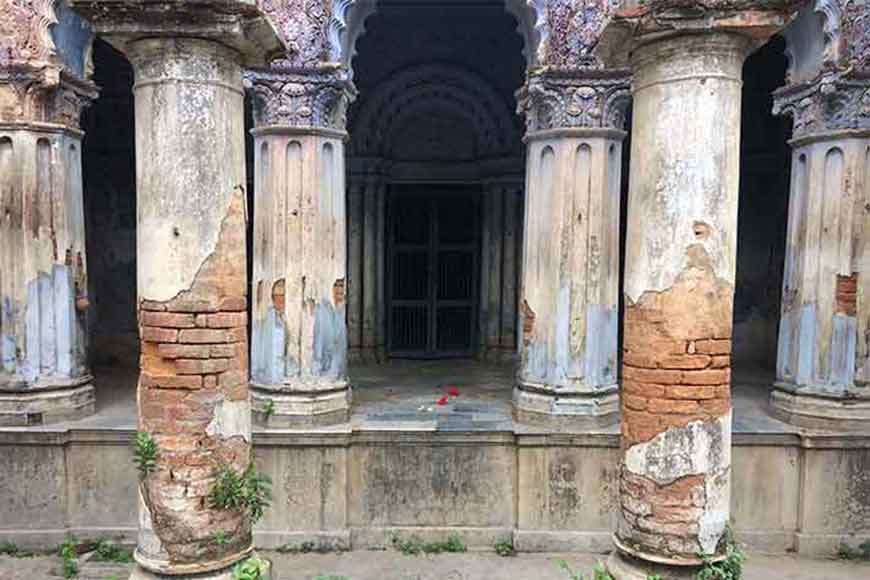
Two brothers, Goursundar Chowdhury and Dwarakanath Chowdhury, jointly built this vast and marvellous mansion. The palace became the epicentre from where the brothers conducted their flourishing business. The palace was built to display their wealth and grandeur. During Holi, the family hosted Jatra-pala (proscenium theatre) for a fortnight every year. News of the splendor and riches depicted during the annual Durga Puja would be the talk of the town and even reached far and wide till Murshidabad. The brothers were patrons of theatre. During Dwarakanath’s son, Gnyanendranath’s wedding, the entire team of Calcutta’s Star Theatre was invited to perform.
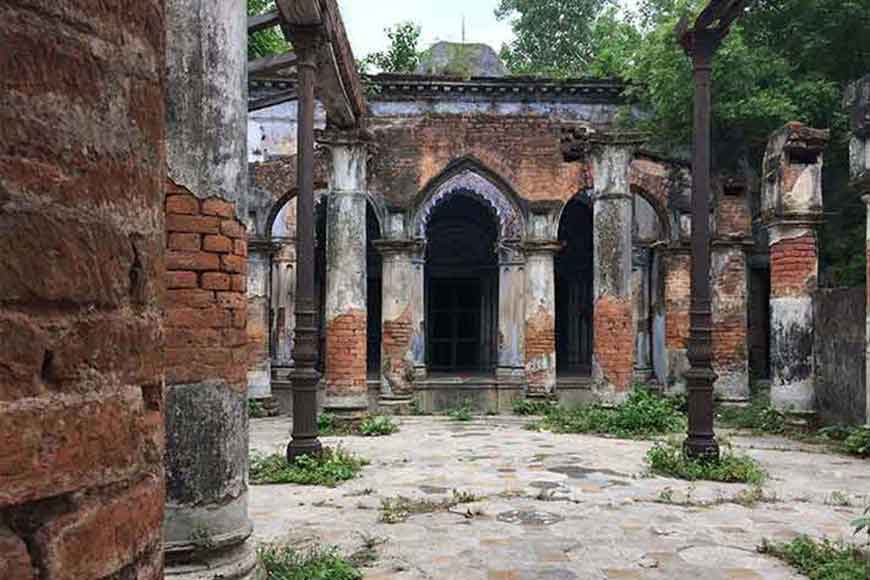
Renowned actor / director, Kshirod Prasad Vidya Vinod, visited Nimtita Palace and in his honour the zamindars built Nimtita Rangamanch (theatre hall) on the lines of public theatre halls of Calcutta. Many famous artistes, including Natyacharya Shishir Kumar Bhaduri, performed on this stage. But all these are memories of a glorious past. The rangamancha was destroyed during a massive flood in 1944. This was also the beginning of the gradual decay of the edifice. As decades went by, the erosion continued and now, the palace is in danger.
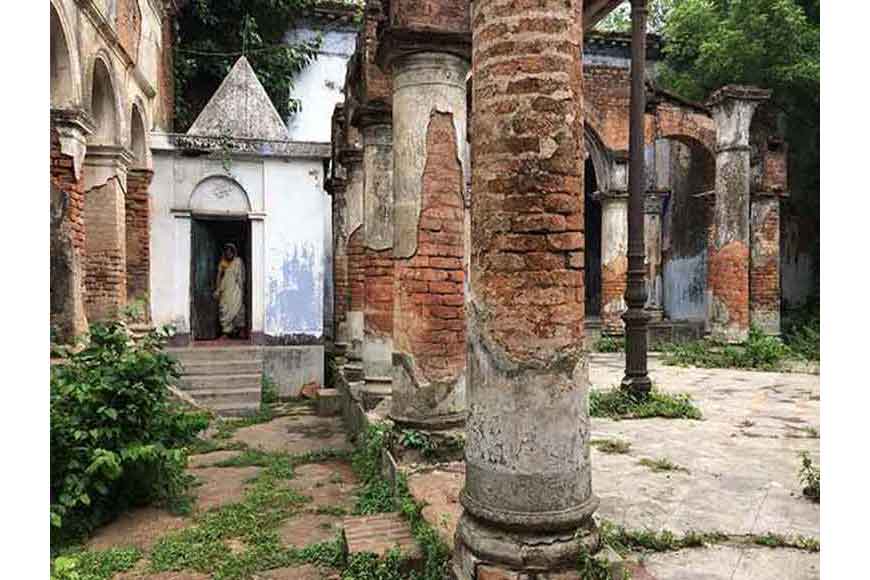
Satyajit Ray shot his film, Jalshaghar (1957) in the backdrop of the Nimtita Rajbari. He went back to shoot two more films, Debi (1959) and Samapti (1960) here. The riches and grandeur of the palace is alive in the frames of these three movies. One cannot compare those exquisite vignettes with what one witnesses today. Instead, it is convenient to blame the colossal destruction to ravages of time. The descendants of the Chowdhury family are all based in Calcutta and visit Nimtita during Durga Puja. The annual Durga Puja is an integral part of family tradition. The condition of the Thakur-Dalan (the courtyard earmarked for Durga Puja) is comparatively better than the other portions and seems to bridge the gap between the past and the present. But for how long one will hold on to this heritage is not known. The fate of this palace itself is uncertain. The brick-and-mortar structure is crumbling gradually. After all, who can defy the power and ravages of time? The Ganga flows close to the palace and during high tide, its turbulent waves kiss the courtyard of the Rajbari. The scenic beauty of the surrounding area is as stunning as the Rajbari itself. Probably it can be turned into a heritage tourist spot.
